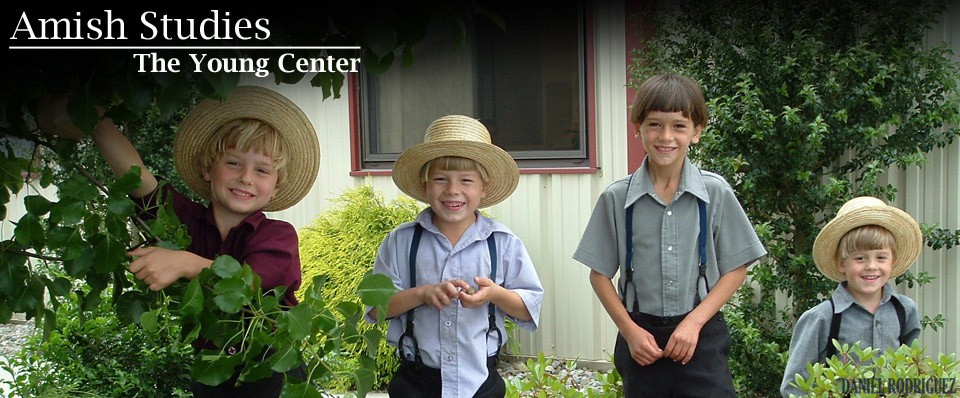Organization
The key building blocks of Amish society are the extended family, the church district, the settlement, and subgroup affiliations.
Large extended families are the basic unit of Amish society. It’s not unusual for an Amish person to have seventy-five first cousins and for grandparents to have fifty or more grandchildren.
Amish society is organized into self-governing local church districts with geographic boundaries such as roads and streams. Twenty to forty households live in each district. As the number of members grows, the district divides. The Amish gather every other Sunday for religious services in members’ homes, rotating from home to home around the district. The close physical proximity encourages face-to-face interaction in daily life.
A cluster of districts in a particular region is known as a settlement. A settlement might contain only one district or it might encompass more than a hundred districts. Holmes County, Ohio, the center of the largest settlement, includes over two hundred districts.
Church districts that have similar practices and whose leaders cooperate with one another are known as affiliations. Unlike districts and settlements, which are linked by geographical boundaries, affiliations are linked by similar lifestyle regulations. Members within an affiliation fellowship together, often intermarry, and permit their ministers to preach in one another’s services. There are more than forty affiliations of Amish—each with its own unique practices.
No central organization or national church authority holds the subgroups together. Most districts in an affiliation have similar practices, but even so the ultimate authority for Amish life and practice lies in the local district.
Additional information
- See chapter 10, “Community Organization,” in Donald B. Kraybill, Karen M. Johnson-Weiner, and Steven M. Nolt, The Amish (Baltimore: Johns Hopkins University Press, 2013).
- See chapter 4, “The Social Architecture of Amish Society,” in Donald B. Kraybill, The Riddle of Amish Culture, 2nd ed. (Baltimore: Johns Hopkins University Press, 2001).
